
November 2020 Weather and Its Impacts on Missouri
Pat Guinan
Extension/State Climatologist
University of Missouri
Unseasonably mild weather occurred in Missouri during November with preliminary data indicating a statewide average temperature of 49.6°F, 5.8 degrees above the long-term average. It was the 9th warmest November on record for the state, Figure 1, and warmest November since 2016. There was an exceptional warm period early in the month with many locations climbing into the 70's for eight consecutive days, Figure 2. It was the first warmer than average month since July, Figure 3.
Preliminary rainfall data for November indicate a statewide average total of 2.93 inches, slightly above the monthly long-term average of 2.89 inches. It was the third consecutive November with near average precipitation, Figure 4, and 7th wetter than average month for the year, Figure 5. According to radar estimates, precipitation was variable, with heaviest monthly totals confined along a 150-mile wide corridor, extending from southwest to east-central Missouri, where 3-5 inches were common, Figure 6. Amounts between 1.5 to 3-inches were typical across the rest of the state. Generally, above average precipitation occurred over northwestern sections, some northern border counties and along a thin corridor extending from south central into east central Missouri. Below normal rainfall fell elsewhere with largest negative departures impacting far southeastern sections.
Winter weather events were non-existent during the month but a severe thunderstorm outbreak impacted southern sections of the state during the evening of November 14th, with several reports of straight-line wind damage, Figure 7.
As of December 1, 2020, the U.S. Drought Monitor map indicated abnormally dry conditions to moderate drought impacting much of the northern half of Missouri, Figure 8.
The mild November weather translated to state, county, and consumer savings associated with lower heating demand. As of November 29th, the Missouri Agricultural Statistics Service reported 85% of the topsoil moisture supplies in adequate condition and 78% of the subsoil moisture supply as adequate. Soybean harvest was 97% complete, compared to the 5-year average of 95%. Winter wheat progressed to 95% planted compared to the 5-year average of 94%. Winter wheat was reported to be 89% emerged, 7 percentage points higher than the 5-year average, and 50% in good to excellent condition. The state reported 75% of its hay supplies and other roughages as adequate, and 83% of the stock water supplies adequate.
Jump to:
- Figure 1
- Figure 2
- Figure 3
- Figure 4
- Figure 5
- Figure 6
- Figure 7
- Figure 8
- Figure 9
- Figure 10
- Figure 11
- Figure 12
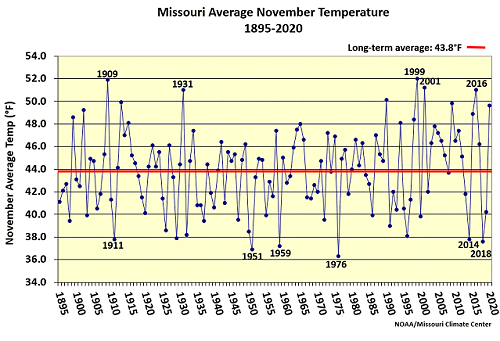
Figure 1.
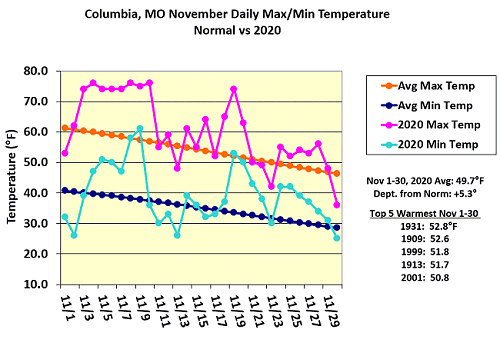
Figure 2.
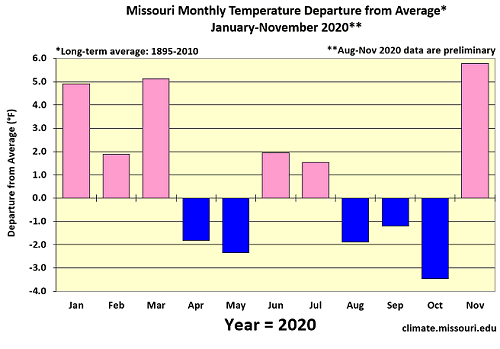
Figure 3.
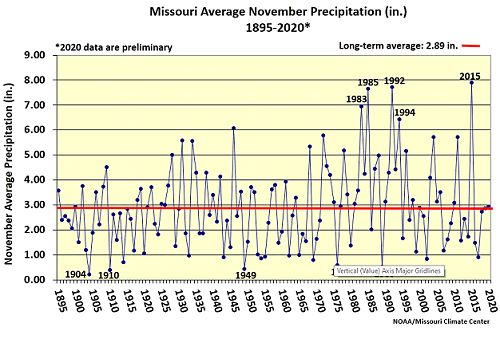
Figure 4.
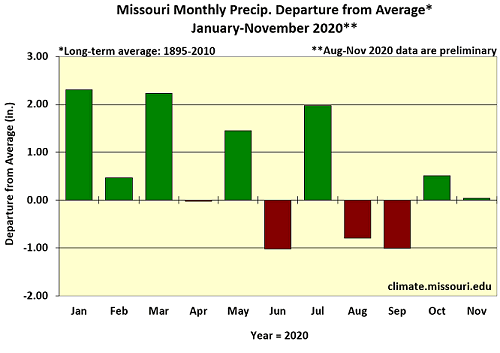
Figure 5.

Figure 6.
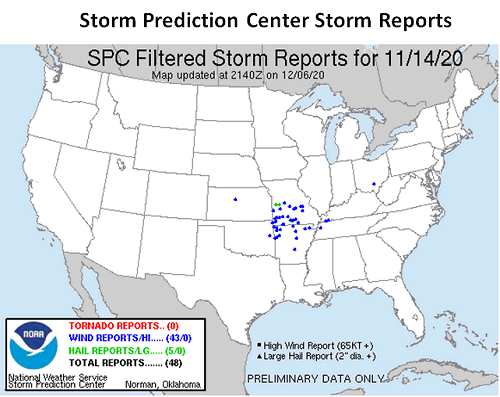
Figure 7.
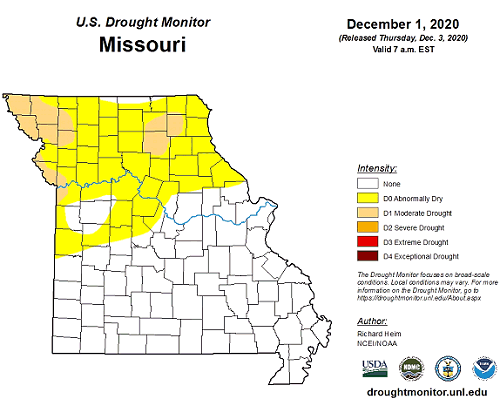
Figure 8.
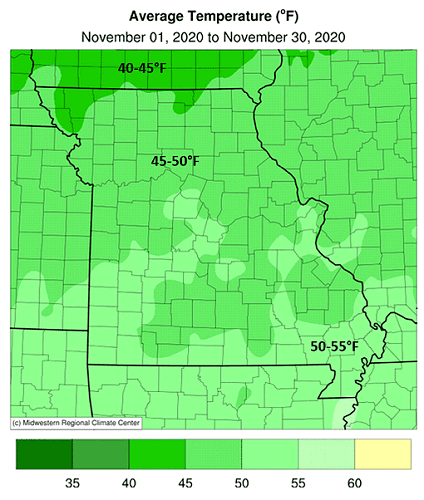



Source: Pat Guinan, 573-882-5908












